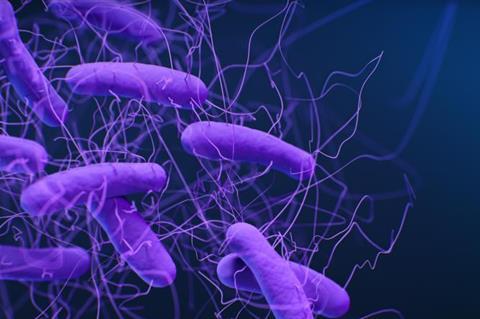Fecal microbiota transplants, or FMTs, are a magic bullet for patients with recurring infections from Clostridioides difficile (C. diff), but researchers are only beginning to understand why.
A new in-depth study of pre- and post-transplant microbiomes shows that FMTs result in an increase of bacteria that inhabit the same niche within the gut as C. diff, but without the negative consequences. The work could be an important step toward isolating more targeted treatments for patients with recurrent C. diff infections.

READ MORE: New weapon against the super tough C. diff bacteria shows promise
READ MORE: Novel C. diff structures are required for infection and offer new therapeutic targets
“Fecal transplants from healthy donors are able to treat patients with recurrent C. diff sometimes very quickly – they save lives,” says Casey Theriot, professor of infectious disease at North Carolina State University and corresponding author of the study. “But FMTs are not standardized and may have unknown long-term health consequences, so we need to move toward more targeted therapies. To that end, we looked at FMT recipients’ microbiome and metabolome, or small molecules inside the gut, to see how FMTs change that environment.”
Lachnospiraceae occupies same niche as C. diff
Theriot and colleagues at NC State and the University of North Carolina at Chapel Hill used metagenomics and a sophisticated metabolomic platform called LC-IMS-MS to examine the stool microbiota and metabolome of 15 patients before and after FMTs. The microbiota refers to bacteria and their genetic information, while the metabolome refers to small molecules such as lipids, bile acids and amino acids.
The analysis found that the pre-transplant microbiota was composed primarily of Enterobacteriaceae, a group of bacteria with genes that make them antibiotic resistant. Post-transplant samples showed a decrease in Enterobacteriaceae and an increase in Lachnospiraceae, a group of bacteria which contain enzymes called bile salt hydrolases (BSHs) that allow them to alter bile acids.
Bile acids are key players in gut health, having a hand in everything from controlling cholesterol to dictating what kinds of bacteria can inhabit the gut. BSHs alter bile acids by separating or attaching – conjugating or reconjugating – them from attached amino acids, allowing other bacteria to further transform the bile acids as they continue through the colon. These transformations affect the bile acids’ toxicity, which in turn affects the ability of different bacteria to survive in the gut.
“Lachnospiraceae and C. diff may eat the same things and occupy the same niche in the gut microbiome, but Lachnospiraceae don’t produce the toxin that C. diff does,” Theriot says.
Out-competing C. diff
“We think the increase in Lachnospiraceae post-transplant has the effect of out-competing C. diff for resources and, through their ability to alter bile acids, creating an environment that is favorable for other good bacteria to live in. But now we have to prove this.”
The researchers identified multiple BSHs from Lachnospiraceae strains associated with microbial conjugated bile acids, and their next steps include looking at the different genomes of these strains to understand their role in the gut microbiome and bile acid metabolism.
“This is one of the first studies to show that microbial conjugated bile acids increase post-FMT,” Theriot says. “The evidence points toward Lachnospiraceae driving this surge, especially with secondary bile acids. So if we can isolate and define what each strain does in the gut then we may be able to use them in targeted therapies for recurrent C. diff infections and move away from FMTs.”







No comments yet